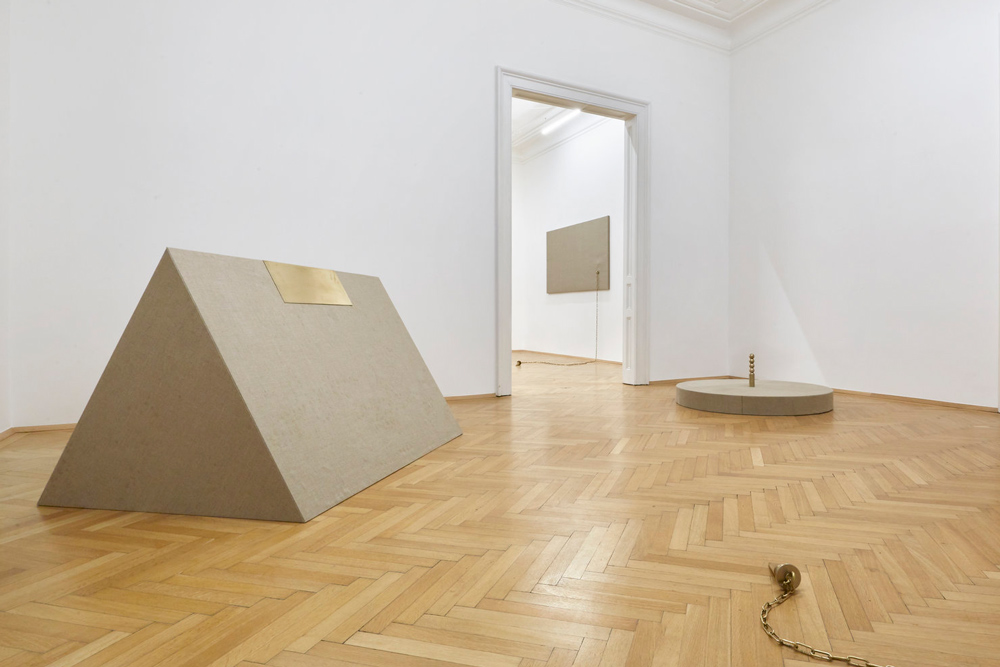
SPECIFIC OBJECTHOOD
2017
Installation view
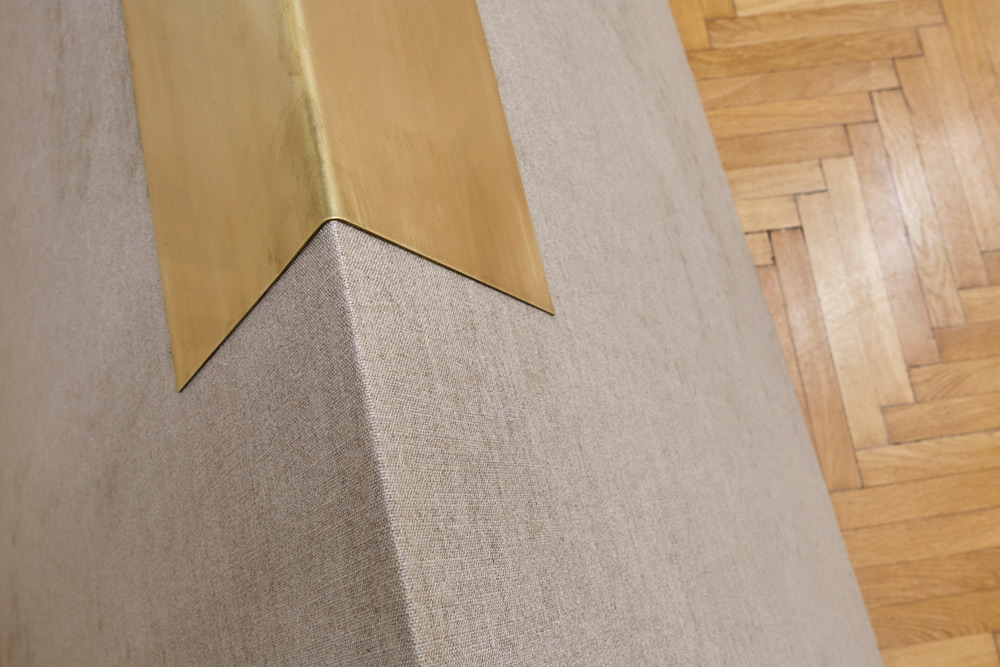
SPECIFIC OBJECTHOOD (WEDGE)
2017
Canvas, wood, brass
100 x 87 x 140 cm
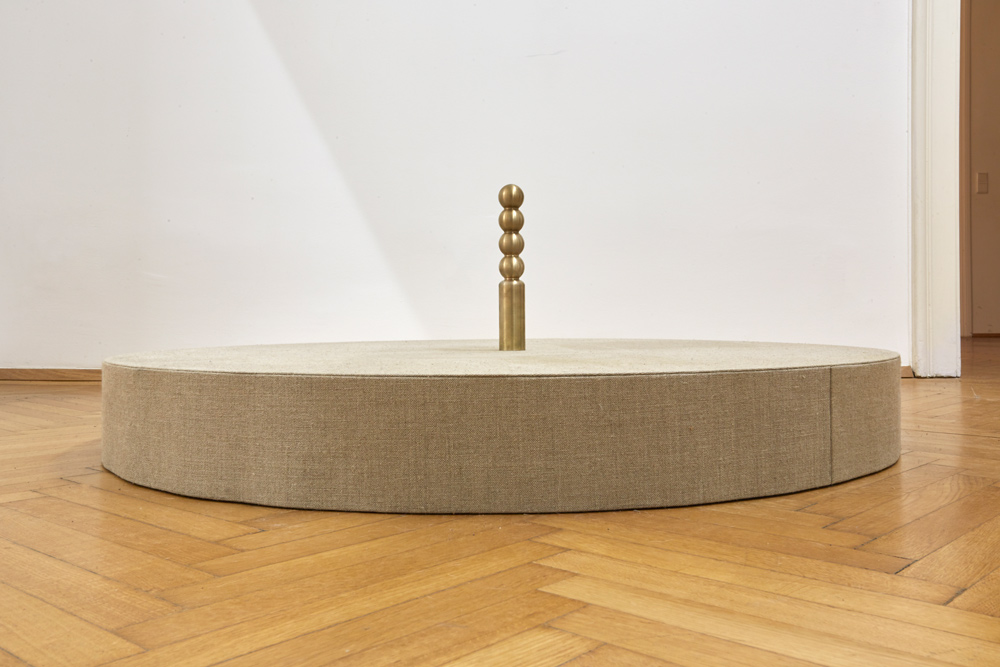
SPECIFIC OBJECTHOOD (ROD)
2017
Canvas, wood, brass-plated Aluminium
Ø 110 x 37 cm
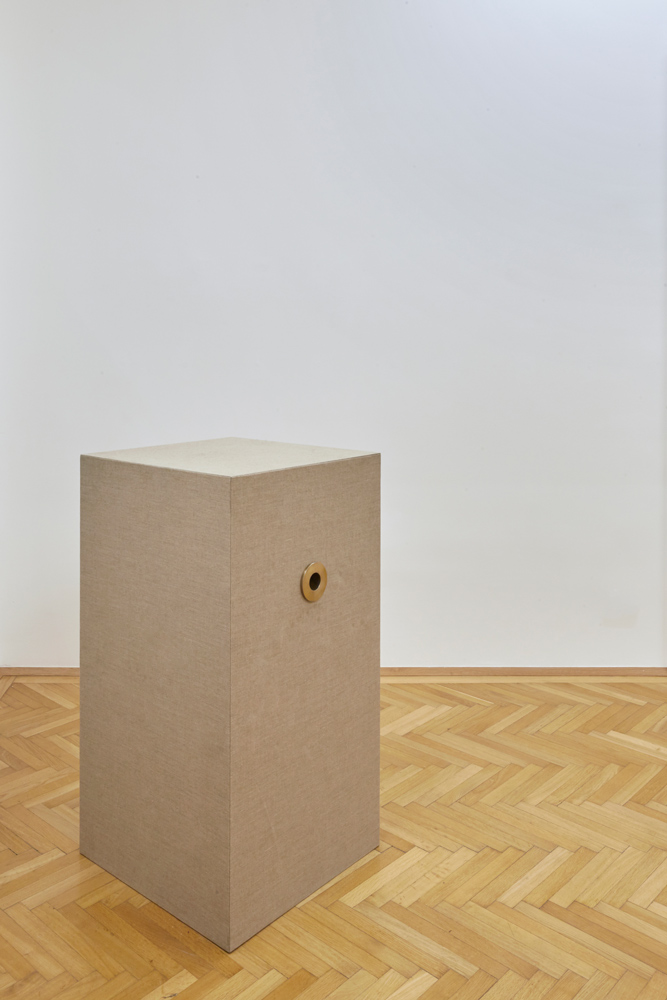

SPECIFIC OBJECTHOOD (BOX)
2017
Canvas, wood, brass
110 x 50 x 50 cm


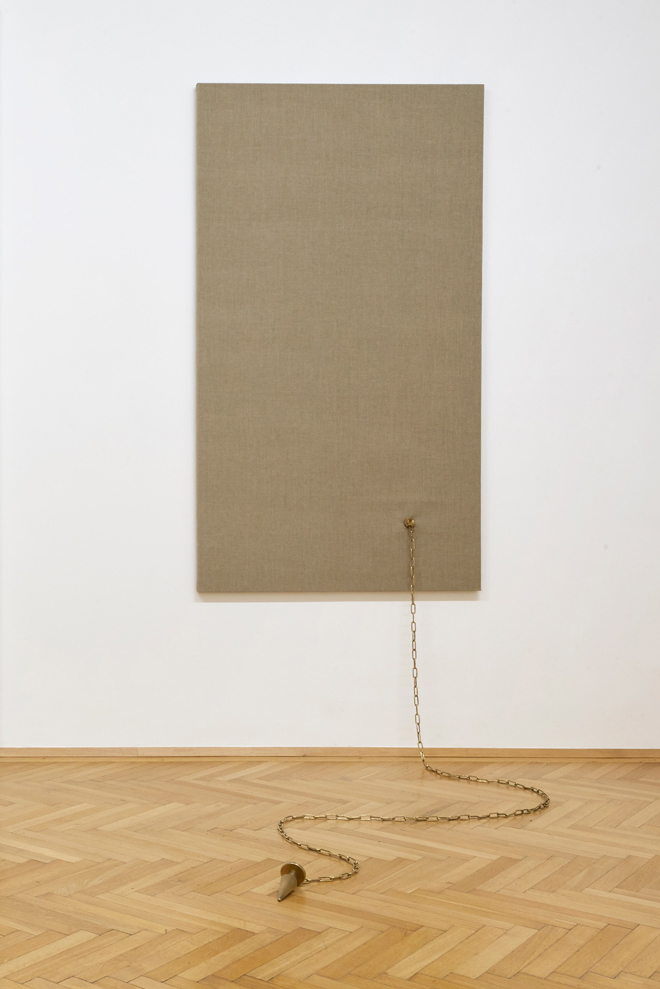
SPECIFIC OBJECTHOOD (PLUG #1) | SPECIFIC OBJECTHOOD (PLUG #2)
2017
Canvas, brass-plated steel, aluminium
180 x 100 x 3 cm | 100 x 80 x 3 cm
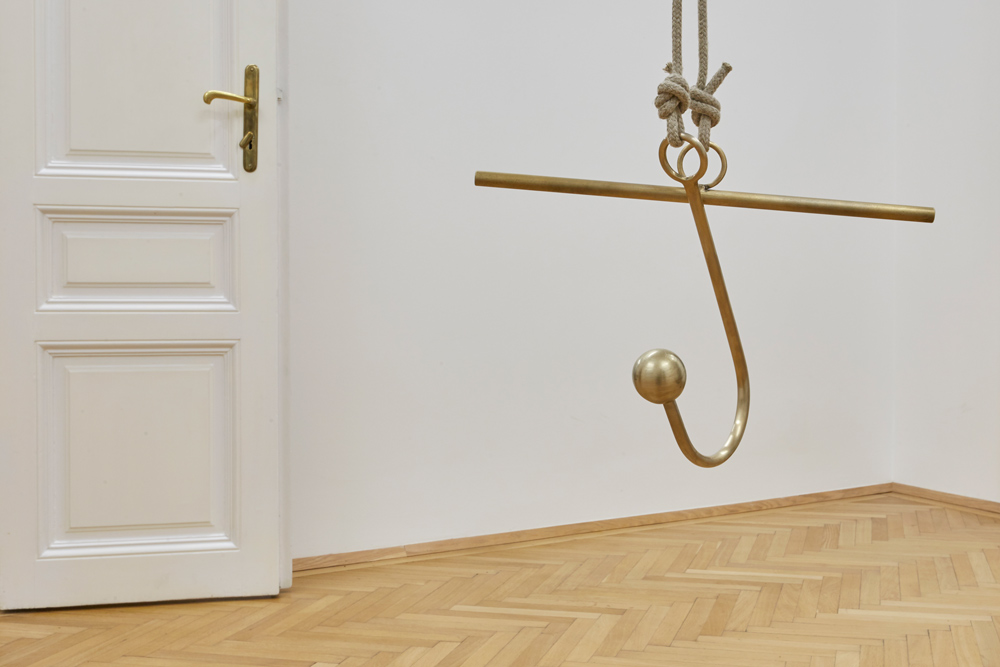
SPECIFIC OBJECTHOOD (HOOK)
2017
Brass-plated steel, hamp rope
290 x 36 x 5 cm
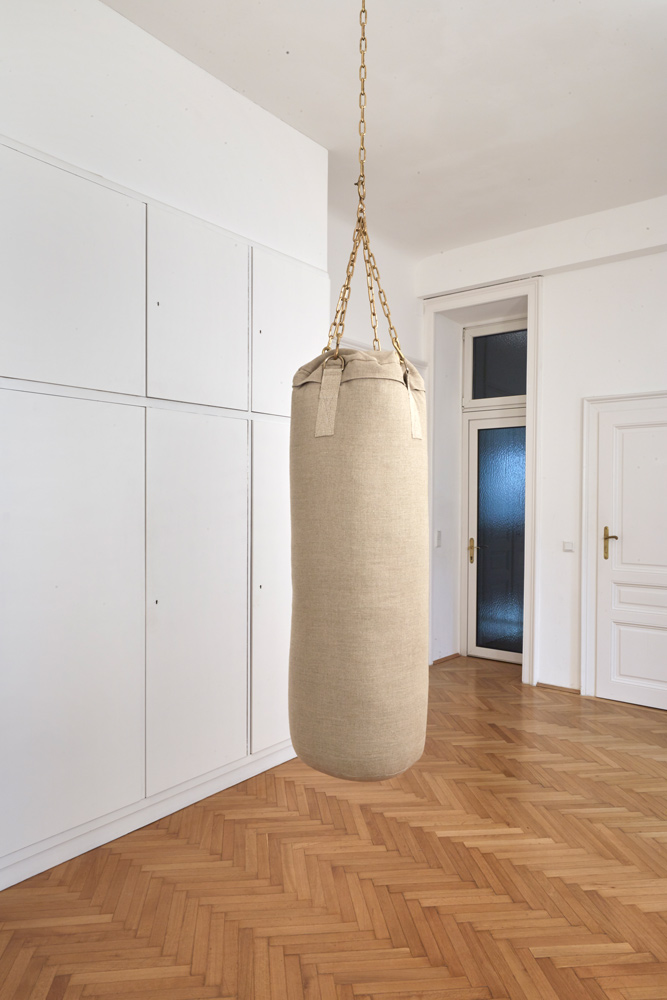

SPECIFIC OBJECTHOOD (PUNCH)
2017
Canvas, brass-plated steel, synthetic filling
Ø 35 x 120 cm
Kay Walkowiak's sculptures […] make use of formal languages and theoretical concepts deposited in cultural and intellectual history, which they subtly dialogize and confront, revealing them as cultural constructions. The point of departure for his current exhibition is the art of Minimal Art, on whose specific objects based on basic geometric forms Walkowiak's sculpture group seems to orient itself. Its title also underlines this connection to Minimal Art, but also contains a reference to its critique, which Michael Fried formulated in his fundamental essay Art and Objecthood. In this essay, Michael Fried criticized the explicit emphasis on "objecthood" in Minimal Art artworks, which no longer sought to negate it through form, but explicitly placed it at the center of their integrative concept of art, thus initiating a completely new mode of experiencing art. Less than mirrors of the expression of the artistic idea, or of the essence of art, the specific objects defined themselves primarily in terms of properties outside themselves. They were explicitly understood as part of an "extended situation" that included sculpture, the surrounding space, and the viewer and demanded less than contemplative immersion, the physical participation of the latter. It is precisely this relation of the work of art to the human body that Walkowiak underlines in his interest in the experience of art resulting from the subject-object relationship, when he covers his sculptures with raw linen fabric. This formal decision cannot be read merely as a commentary on the objects of Minimal Art, which deliberately position themselves outside the genre boundaries of painting and sculpture. Rather, it lends his works a haptic quality that entices a tactile gaze that activates one's own bodily sensibility in their contemplation.
Extensions attached to the objects - like phallus-like forms on chains - seem to "bind" the viewer's body even more explicitly to the artwork. They lead to an interlocking of the visual sensation of pleasure with the imagination of bodily experiential values ranging from desire to aversion, as whose projection surfaces the sculptures function. Kay Walkowiak's works may thus be read as a commentary on the fetish character of the artwork in contemporary consumer society. Beyond this, however, the strong emphasis on bodily sensation in their contemplation - especially in the context of the reference to Minimal Art - also suggests a phenomenological perspective. The artists of Minimal Art found inspiration for the idea that the body and its experience play a decisive role in shaping the consciousness of the work of art in the phenomenology of Maurice Merleau-Ponty. Merleau-Ponty founded his philosophy away from the idea of the autonomous, thinking subject and turned to the human body, which he understood as the decisive mediator between man and the world, since it is both a perceptible exterior and a perceptible interior. According to Merleau-Ponty, the phenomenological body enables a form of pre-reflexive experience of the world that resembles a sensual approach to reality, in which being and consciousness coincide and the distance between the ego and the world is abolished. In the stimulation of precisely this pre-reflexive horizon of experience, which shakes the Western dualism of body and mind as well as subject and object, the decisive moment of the "specific objecthood" of Walkowiak's sculptures can be identified. The sensations triggered by them are no longer, as Merleau-Ponty put it in his Phenomenology of Perception, "invasion of the sensuous into the sensing," but a "pairing" (accouplement) of the gaze with the seen, of the body with things. It is precisely this moment of "pairing" that is the subject of Walkowiak's filmic work Wonderland, in addition to the sculptures. On a metaphorical level, this work addresses the connection of the body with things in images of a direct (sexual) contact between the persons depicted and the sculptures presented in the exhibition.
Text: Stephanie Damianitsch (Leopold Museum), Vienna 2017
Photos: (c) Matthias Bildstein
Extensions attached to the objects - like phallus-like forms on chains - seem to "bind" the viewer's body even more explicitly to the artwork. They lead to an interlocking of the visual sensation of pleasure with the imagination of bodily experiential values ranging from desire to aversion, as whose projection surfaces the sculptures function. Kay Walkowiak's works may thus be read as a commentary on the fetish character of the artwork in contemporary consumer society. Beyond this, however, the strong emphasis on bodily sensation in their contemplation - especially in the context of the reference to Minimal Art - also suggests a phenomenological perspective. The artists of Minimal Art found inspiration for the idea that the body and its experience play a decisive role in shaping the consciousness of the work of art in the phenomenology of Maurice Merleau-Ponty. Merleau-Ponty founded his philosophy away from the idea of the autonomous, thinking subject and turned to the human body, which he understood as the decisive mediator between man and the world, since it is both a perceptible exterior and a perceptible interior. According to Merleau-Ponty, the phenomenological body enables a form of pre-reflexive experience of the world that resembles a sensual approach to reality, in which being and consciousness coincide and the distance between the ego and the world is abolished. In the stimulation of precisely this pre-reflexive horizon of experience, which shakes the Western dualism of body and mind as well as subject and object, the decisive moment of the "specific objecthood" of Walkowiak's sculptures can be identified. The sensations triggered by them are no longer, as Merleau-Ponty put it in his Phenomenology of Perception, "invasion of the sensuous into the sensing," but a "pairing" (accouplement) of the gaze with the seen, of the body with things. It is precisely this moment of "pairing" that is the subject of Walkowiak's filmic work Wonderland, in addition to the sculptures. On a metaphorical level, this work addresses the connection of the body with things in images of a direct (sexual) contact between the persons depicted and the sculptures presented in the exhibition.
Text: Stephanie Damianitsch (Leopold Museum), Vienna 2017
Photos: (c) Matthias Bildstein